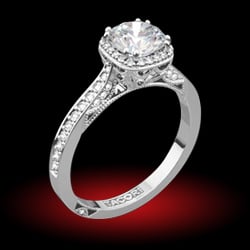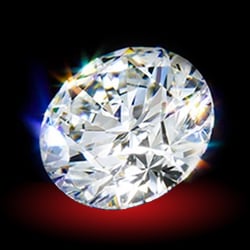You are using an out of date browser. It may not display this or other websites correctly.
You should upgrade or use an alternative browser.
You should upgrade or use an alternative browser.
Reflectivity Meter
- Thread starter thegemjar
- Start date
- Status
- Not open for further replies. Please create a new topic or request for this thread to be opened.
Richard Sherwood
Ideal_Rock
- Joined
- Sep 25, 2002
- Messages
- 4,924
Is there a particular "reflectivity meter" that you''re asking about?
The only one I know of was called the Gem Meter, and was manufactured by Sarasota Instruments, which is no longer in existence.
It was a pretty good instrument, as long as you understood it''s limitations. It wasn''t as precise as a refractometer, but gave a pretty good indication of what the stone was, and definitely what it was not.
Do you have the instrument in question, or thinking of buying a particular one, or just asking in general?
The only one I know of was called the Gem Meter, and was manufactured by Sarasota Instruments, which is no longer in existence.
It was a pretty good instrument, as long as you understood it''s limitations. It wasn''t as precise as a refractometer, but gave a pretty good indication of what the stone was, and definitely what it was not.
Do you have the instrument in question, or thinking of buying a particular one, or just asking in general?
- Joined
- Feb 17, 2004
- Messages
- 1,104
Hi Mark, and welcome.
My question is the same as Richard Sherwood''s. Which particular reflectivity meter do you have in mind?
This technology, pioneered separately by Dr. William Hanneman and Sarasota Instruments and maybe others, resulted in two machines in the 1970s: the Jemeter (Sarasota) and the Jeweler''s Eye (Hanneman). The Jemeter was manufactured in meter and digital read-out versions, while Hanneman''s has meter only. While the digital Jemeter was generally agreed to be the more commercially successful, it''s disappeared from the American market while the Hanneman machine is still available. There is currently a new entry from Presidium.
These machines theoretically have two advantages. They increase the range of readings above the approx. 1.80 barrier of standard refractometers, allowing separation of high R.I. stones like diamond, moissanite, CZ, strontium titanate, YAG, etc. And they eliminate nasty R.I. liquids used with standard refractometers.
On the downside they often have significant calibration problems and accurate readings require that the gem being tested must be scrupulously clean and have a nearly perfect polish, which is almost never the case. In other words, basic gemological knowledge is required to interpret results. And if you have that knowledge you can separate most diamond simulants and other gems by other means like single/double refraction, visual optics, spectrum, etc.
As a side note, there''s now a European knock-off of the digital Jemeter being marketed as the Gemmeter at around $800 U.S. (with shipping). I have no experience with it but the price alone is enough to scare me away, along with the very mixed performance reports I''ve read about it. But I''ve ordered one of the more reasonably-priced Presidium machines and will report back on my impressions of its performance. Maybe someone else can report on the Hanneman machine.
There''s no shortcut I know of to avoid doing the hard work required to learn gemology. Most beginners vastly underestimate both the problems involved and the knowledge needed to deal with them. Reflectivity machines can provide indications only. With gems a little knowledge can be a dangerous -- and often a very expensive -- thing.
Richard M.
My question is the same as Richard Sherwood''s. Which particular reflectivity meter do you have in mind?
This technology, pioneered separately by Dr. William Hanneman and Sarasota Instruments and maybe others, resulted in two machines in the 1970s: the Jemeter (Sarasota) and the Jeweler''s Eye (Hanneman). The Jemeter was manufactured in meter and digital read-out versions, while Hanneman''s has meter only. While the digital Jemeter was generally agreed to be the more commercially successful, it''s disappeared from the American market while the Hanneman machine is still available. There is currently a new entry from Presidium.
These machines theoretically have two advantages. They increase the range of readings above the approx. 1.80 barrier of standard refractometers, allowing separation of high R.I. stones like diamond, moissanite, CZ, strontium titanate, YAG, etc. And they eliminate nasty R.I. liquids used with standard refractometers.
On the downside they often have significant calibration problems and accurate readings require that the gem being tested must be scrupulously clean and have a nearly perfect polish, which is almost never the case. In other words, basic gemological knowledge is required to interpret results. And if you have that knowledge you can separate most diamond simulants and other gems by other means like single/double refraction, visual optics, spectrum, etc.
As a side note, there''s now a European knock-off of the digital Jemeter being marketed as the Gemmeter at around $800 U.S. (with shipping). I have no experience with it but the price alone is enough to scare me away, along with the very mixed performance reports I''ve read about it. But I''ve ordered one of the more reasonably-priced Presidium machines and will report back on my impressions of its performance. Maybe someone else can report on the Hanneman machine.
There''s no shortcut I know of to avoid doing the hard work required to learn gemology. Most beginners vastly underestimate both the problems involved and the knowledge needed to deal with them. Reflectivity machines can provide indications only. With gems a little knowledge can be a dangerous -- and often a very expensive -- thing.
Richard M.
Thanks for the info. The instrument in question would be the Presidium Reflectivity Meter. I have purchased this already, and want to use it along with my other tools (loupe, chelsea, dichroscope, specific gravity) to help with identifying gems. I am saving up now to purchase my next instrument the Refractometer. I am also saving up to take classes on gemstone identification. Getting back to the Reflectivity Meter, in my opinion on using this instrument, although I don''t have years of experience in gemstone identification, it works very well if calibrated correctly. When I received it I used it on my gems to help identify gems I wasn''t sure about, and others just to confirm. On gems that I knew for sure like quartz, topaz, sapphire, etc, I was getting readings that were not close to the list. Directions stated that I didn''t have to calibrate because it was done at the manufacturer, but I decided to re-calibrate and now it works much better, readings are more closer if not right on to the list. Only problem I have is topaz and tourmaline, very close in meter readings so I resort to the specific gravity for them.
Thanks again,
Mark
Thanks again,
Mark
JB Senoble
Rough_Rock
- Joined
- Jul 18, 2005
- Messages
- 1
The European Gemmeter that Richard is talking about is a new instrument which has been elaborated by one of my friend who is a very experienced gemologist from Idar Oberstein.
The main difference with the Sarasota is that it can display the two refractive index and the birefringence at the same time on the screen, without moving the stone.
It cost 575 euros without taxes, which is expensive for sure, and you can see more details on that website :
http://www.gemcontrol.at/en_Gemmeter.php
I have not tested it yet, but as soon as i will be back to Europe i think i will buy one.
It can be very useful for me as iam often on the field, in gem mining areas, and if there's a rough stone i really dont know about, i can easily find a cutter in those places who can polish a small window on the stone. Or more simply in gem markets, when u can sometimes find new cut gemstones from new occurences...
But as my friend says, Gemmeter and refractometer are complementary, you should get both !
I hope those informations will help you.
JB
www.fieldgemology.com
The main difference with the Sarasota is that it can display the two refractive index and the birefringence at the same time on the screen, without moving the stone.
It cost 575 euros without taxes, which is expensive for sure, and you can see more details on that website :
http://www.gemcontrol.at/en_Gemmeter.php
I have not tested it yet, but as soon as i will be back to Europe i think i will buy one.
It can be very useful for me as iam often on the field, in gem mining areas, and if there's a rough stone i really dont know about, i can easily find a cutter in those places who can polish a small window on the stone. Or more simply in gem markets, when u can sometimes find new cut gemstones from new occurences...
But as my friend says, Gemmeter and refractometer are complementary, you should get both !
I hope those informations will help you.
JB
www.fieldgemology.com
- Status
- Not open for further replies. Please create a new topic or request for this thread to be opened.
Share:
Featured Topics
The Ultimate Guide to Men’s Wedding Bands: Metals, Fit & Finish
The Ultimate Guide to Men’s Wedding Bands: Metals, Fit & Finish - 06/27
Chipped Diamonds: Causes, Risks, and What You Should Do About It
Chipped Diamonds: Causes, Risks, and What You Should Do About It - 06/27







300x240.png)